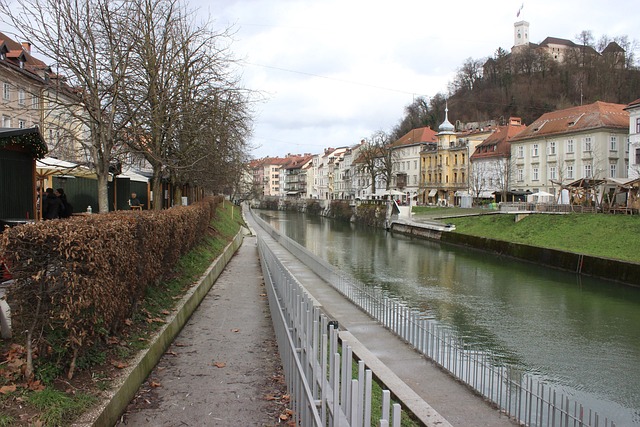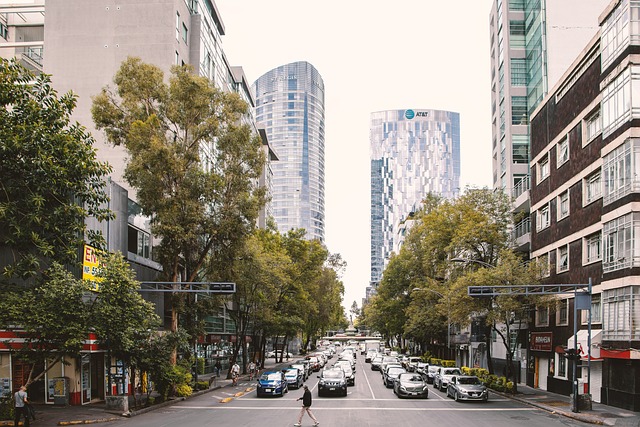Karachi residents rely on the Air Quality Index (AQI) to monitor real-time air quality, with lower AQI numbers indicating better conditions. Proactive measures like limiting outdoor activities and wearing masks are crucial during high pollution days. Despite challenges posed by factors like vehicular emissions, industrial pollutants, and limited green spaces, Karachi is tackling air pollution through stringent emission controls, advanced sensors, public awareness campaigns, and urban planning initiatives aimed at creating a healthier future for its inhabitants.
The air we breathe in Karachi, a bustling metropolis, significantly impacts our health and well-being. This article delves into the intricate world of the Air Quality Index (AQI) as it pertains to Bahria Town, Karachi. We’ll explore Karachi’s current air quality status, uncover factors affecting its environment, discuss the health implications of poor air quality, and highlight efforts to improve it. Understanding these elements is crucial for both residents and visitors alike to navigate and contribute to a healthier Karachi.
- Understanding Air Quality Index: A Basic Guide
- Karachi's Air Quality: Current Status and Trends
- Factors Affecting Air Quality in Bahria Town, Karachi
- Health Implications of Poor Air Quality
- Efforts and Initiatives Towards Improving Air Quality in Karachi
Understanding Air Quality Index: A Basic Guide

The Air Quality Index (AQI) is a fundamental tool used to communicate air quality levels in real-time, providing a clear understanding of the potential health risks associated with airborne pollutants. It’s designed to help folks, especially those living in urban areas like Karachi, make informed decisions about their outdoor activities and overall well-being. The AQI ranges from 0 to 500, with lower values indicating better air quality, and higher values signaling increasing health risks. Pollutants such as nitrogen dioxide, sulfur dioxide, carbon monoxide, and particulate matter (PM2.5 and PM10) are measured and combined to calculate the index.
In Karachi, understanding the AQI is crucial for residents to stay informed about the city’s air quality. The index allows people to take proactive measures on days when pollution levels soar, such as limiting outdoor activities, wearing masks, and ensuring proper ventilation indoors. By keeping an eye on the AQI, Karachis can contribute to collective efforts to improve air quality and mitigate the health impacts of pollution.
Karachi's Air Quality: Current Status and Trends

Karachi, Pakistan’s economic hub, has long grappled with air pollution issues, significantly impacting its inhabitants’ quality of life. The Air Quality Index (AQI) serves as a critical metric to gauge the city’s overall air health. Recent trends indicate that while Karachi has made strides in improving its air quality, challenges remain, especially during peak seasons.
The current AQI data for Bahria Town, a residential and commercial area within Karachi, reveals fluctuations throughout the year. Winter months typically witness lower AQI levels due to reduced industrial activities and cooler temperatures, which minimize smog formation. However, during the summer, high temperatures, coupled with increased vehicular emissions and industrial pollutants, contribute to elevated AQI values, posing health risks to residents. This urban center’s air quality is further complicated by its dense population density and limited green spaces, making it a complex environment for maintaining optimal air standards.
Factors Affecting Air Quality in Bahria Town, Karachi

Air quality in Bahria Town, Karachi is influenced by a multitude of factors that contribute to its current state and potential fluctuations. One of the primary sources of pollution in this urban center comes from vehicular emissions, given the dense traffic congestion, especially during peak hours. The city’s topography also plays a role; the coastal location can trap pollutants, leading to reduced dispersion rates. Additionally, industrial activities within and around Karachi, including manufacturing plants and construction sites, release harmful gasses and particulate matter into the air. Weather patterns, such as inversions that prevent vertical mixing, exacerbate the problem by trapping pollutants near the ground level.
Further complicating matters is the open burning of waste, a common practice in some areas, which releases toxic substances into the atmosphere. Landfill sites and illegal dumping grounds also contribute to air pollution due to the breakdown of organic matter. In light of these factors, it’s crucial for Bahria Town’s residents and authorities to be proactive in mitigating air pollution through measures like promoting public transport, enforcing stricter emission standards for vehicles and industries, implementing effective waste management practices, and planning urban development with clean air considerations at the forefront.
Health Implications of Poor Air Quality

In Karachi, just like in many other urban centers, poor air quality has significant health implications. The Air Quality Index (AQI) is a critical metric that helps assess the safety of outdoor air for breathing. When the AQI levels are high, indicating poor air quality, residents of Karachi are at an increased risk of respiratory and cardiovascular diseases, eye irritation, and other health issues. Children, the elderly, and individuals with pre-existing health conditions are particularly vulnerable.
Long-term exposure to polluted air can lead to chronic illnesses such as asthma, bronchitis, and even lung cancer. The fine particulate matter (PM2.5) prevalent in Karachi’s air can penetrate deep into the respiratory system, causing inflammation and damage over time. Thus, it is essential for residents to stay informed about the AQI levels and take necessary precautions on days when air quality is poor to protect their health.
Efforts and Initiatives Towards Improving Air Quality in Karachi

Karachi, as one of Pakistan’s most populous cities, has been grappling with air pollution issues for years. However, there have been notable efforts and initiatives to combat this challenge. The government, in collaboration with various environmental organizations, has implemented several strategies to improve air quality. These include stringent emission control measures for vehicles, industrial plants, and power generation units. Regular monitoring of air quality using advanced sensors and technology helps identify sources of pollution and guide targeted interventions.
Furthermore, public awareness campaigns have played a crucial role in encouraging citizens to adopt sustainable practices. Promoting the use of clean energy sources, such as solar and wind power, has also been a focus. The city’s urban planning initiatives emphasize green spaces and efficient transportation systems, aiming to reduce traffic congestion and its associated emissions. These collective efforts demonstrate a comprehensive approach to tackling air pollution in Karachi, paving the way for a healthier and more sustainable future for the metropolis.
The air quality index (AQI) in Bahria Town, Karachi, reflects the city’s complex environmental challenges. Understanding the current status, trends, and contributing factors is crucial for implementing effective solutions. By addressing issues like vehicle emissions, industrial pollution, and construction activities, Karachi can strive for healthier AQI levels. Collaborative efforts between authorities, residents, and initiatives focused on sustainable practices are vital to enhancing the air quality in this bustling metropolis, ensuring a cleaner and more livable environment for all its folks.
